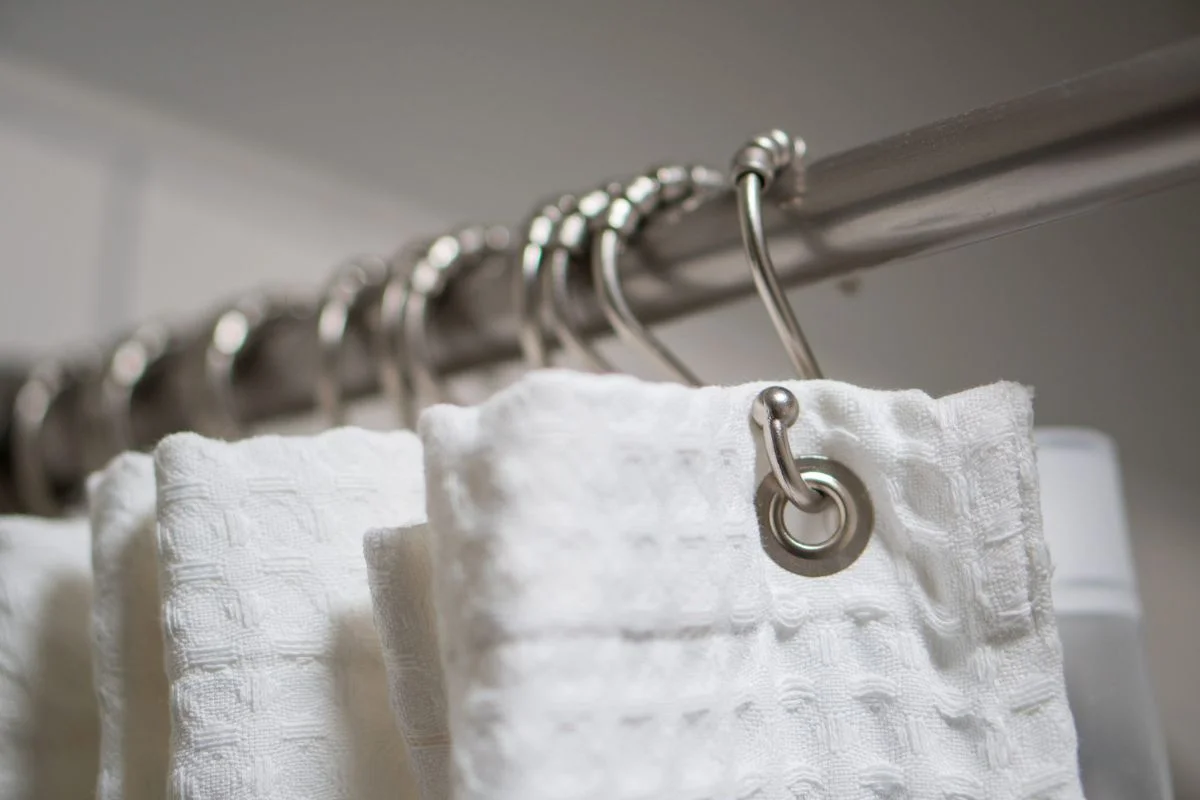Curtain hooks are not just functional necessities but also opportunities to add a touch of style and sophistication to your window treatments. In modern home decor, innovative curtain hook designs have become increasingly popular for their ability to enhance the overall aesthetic appeal of a space while providing practical functionality. From sleek and minimalist designs to bold and artistic creations, curtain hooks offer endless possibilities for customization and personalization in interior design. In this guide, we’ll explore some of the most innovative curtain hook designs that are redefining the concept of window treatments in modern homes. Discover how these stylish and creative hooks can elevate the look and feel of your living spaces, creating a harmonious blend of form and function that reflects your unique taste and personality.
Importance of Curtain Hooks in Window Treatments
Curtain hooks may seem like small and inconspicuous components, but they play a crucial role in the functionality and aesthetics of window treatments. Here are some key reasons why curtain hooks are important in window treatments:
Support and Stability: Curtain hooks provide essential support for curtains, ensuring they hang evenly and securely across the window. By attaching the curtains to the curtain rod or track, hooks help prevent sagging or uneven distribution of fabric, maintaining a neat and polished appearance.
Smooth Operation: Curtain hooks facilitate the smooth opening and closing of curtains, allowing for effortless adjustment of light levels and privacy. Whether sliding along a curtain rod or track, hooks ensure that curtains move seamlessly, enhancing the overall functionality of the window treatment.
Versatility: Curtain hooks come in various types and designs to accommodate different curtain styles and window configurations. From traditional pinch pleat hooks to decorative rings and clips, there are options available to suit every preference and curtain type, providing versatility in design and installation.
Aesthetic Enhancement: Beyond their practical function, curtain hooks contribute to the overall aesthetic appeal of window treatments. Decorative hooks can add a touch of elegance or personality to curtains, complementing the decor style of the room and serving as a visual focal point.
Customization Possibilities: Curtain hooks offer opportunities for customization and creativity in window treatments. Homeowners can choose from a wide range of hook designs, materials, and finishes to match their decor preferences and achieve a cohesive look throughout the home.
Durability and Longevity: High-quality curtain hooks are built to last, providing reliable support for curtains over the long term. Made from sturdy materials such as metal or plastic, hooks withstand daily use and ensure that curtains remain securely in place for years to come.
Definition and Function of Curtain Hooks
Curtain hooks are small hardware components used to attach curtains or draperies to curtain rods, tracks, or rings, allowing them to be hung and operated effectively. These hooks play a crucial role in the functionality and aesthetics of window treatments, providing essential support and facilitating smooth operation.
Definition: Curtain hooks typically consist of a small metal or plastic piece with a curved or straight design, allowing them to loop through the top hem or pleats of curtains. They are designed to securely hold the curtains in place while allowing them to move freely along the curtain rod or track.
Function:
Attachment: The primary function of curtain hooks is to attach curtains or draperies to the curtain rod or track, ensuring they hang evenly and securely across the window
Support: Curtain hooks provide essential support for curtains, preventing sagging or uneven distribution of fabric. They help maintain the desired appearance of the window treatment, ensuring a neat and polished look.
Smooth Operation: By facilitating the smooth movement of curtains along the curtain rod or track, hooks enable easy opening and closing of the window treatment. This allows for effortless adjustment of light levels and privacy in the room.
Versatility: Curtain hooks come in various types and designs to accommodate different curtain styles and installation methods. From traditional pinch pleat hooks to decorative rings and clips, there are options available to suit every preference and curtain type.
Aesthetic Enhancement: Beyond their practical function, curtain hooks contribute to the overall aesthetic appeal of window treatments. Decorative hooks can add a touch of elegance or personality to curtains, enhancing the decor style of the room.
Types of Curtain Hooks
Curtain hooks come in various types and designs, each offering unique features and functionalities to accommodate different curtain styles and installation methods. Understanding the differences between these types can help homeowners choose the most suitable option for their window treatments. Here are some common types of curtain hooks:
Pinch Pleat Hooks:
Description: Pinch pleat hooks feature a curved design with multiple prongs or loops, allowing them to attach to the back of the curtain’s pinch pleats. These hooks create a tailored and structured look, gathering the fabric into elegant folds.
Ideal for: Pinch pleat hooks are suitable for curtains with pinch pleated headings, including traditional draperies and formal window treatments.
Pros and Cons:
- Pros: Create a classic and polished appearance, provide sturdy support for heavy fabrics, available in various sizes and materials.
- Cons: Require precise positioning and spacing for proper pleating, may be more challenging to install than other types of hooks.
Ring Clips:
Description: Ring clips are small clips or rings with attached clips that slide onto the curtain rod. These clips allow curtains to be easily hung and removed, providing a versatile and adjustable hanging solution.
Ideal for: Ring clips are suitable for lightweight curtains or fabric panels, as well as for curtains with rod-pocket or tab-top headings.
Pros and Cons:
- Pros: Easy to install and adjust, provide flexibility for changing curtain styles or lengths, available in various finishes and designs.
- Cons: May not provide as sturdy support for heavy curtains, clips may leave marks on the fabric over time.
S-Hooks:
Description: S-hooks are shaped like the letter “S” and feature a hook on each end. They are designed to loop through curtain eyelets or grommets and attach to the curtain rod, providing a simple and effective hanging solution.
Ideal for: S-hooks are suitable for curtains with eyelet or grommet headings, as well as for lightweight or sheer curtains.
Pros and Cons:
- Pros: Easy to install and remove, provide a minimalist and streamlined look, available in various sizes and materials.
- Cons: May not provide as secure support for heavy curtains, hooks may become misaligned or dislodged with frequent use.
Traverse Hooks:
Description: Traverse hooks are specifically designed for use with traverse rods, which feature a cord or wand mechanism for opening and closing curtains. These hooks attach to the traverse rod carriers and allow curtains to be operated smoothly.
Ideal for: Traverse hooks are ideal for curtains with pinch pleated or rod-pocket headings, as well as for heavy or floor-to-ceiling curtains.
Pros and Cons:
- Pros: Facilitate smooth and effortless operation of traverse curtains, provide sturdy support for heavy fabrics, compatible with automated curtain systems.
- Cons: Require precise alignment and spacing for proper operation, may be more complex to install than other types of hooks.
Creative Uses of Curtain Hooks
Curtain hooks are versatile hardware components that can be repurposed in various creative ways beyond their traditional role in hanging curtains. Here are some innovative uses of curtain hooks:
Jewelry Organizer: Attach curtain hooks to a wall or inside a closet door to create a stylish and functional jewelry organizer. Hang necklaces, bracelets, and earrings from the hooks to keep them organized and easily accessible, preventing tangling and damage.
Scarf Hanger: Use curtain hooks to hang scarves or shawls neatly in your closet or wardrobe. Simply loop the scarves through the hooks and hang them on a closet rod or hanger, creating a space-saving storage solution that keeps your accessories visible and organized.
Kitchen Utensil Holder: Install curtain hooks on a kitchen rail or mounted rod to create a convenient utensil holder. Hang spatulas, ladles, and other cooking utensils from the hooks for easy access while cooking, freeing up valuable countertop space and keeping your kitchen tools within reach.
Shower Curtain Rings: Repurpose curtain hooks as shower curtain rings for a unique and stylish bathroom decor. Attach the hooks to a standard shower curtain rod and hang your shower curtain from them, adding a decorative touch to your bathroom while keeping the curtain securely in place.
Plant Hanger: Use curtain hooks to hang small potted plants or herbs near a sunny window. Attach the hooks to a curtain rod or suspended wire, then hang the pots from them using S-hooks or twine. This creative use of curtain hooks adds greenery and visual interest to your home decor.
Cable Organizer: Keep your cables and cords organized and tangle-free by using curtain hooks as cable organizers. Attach the hooks to the underside of a desk or along a wall, then coil your cables and hang them from the hooks to prevent them from getting tangled or tangled.
Art Display: Create a unique art display by using curtain hooks to hang framed artwork or photos on a wall. Install the hooks in a grid pattern or along a horizontal rail, then hang your artwork from them using wire or string. This versatile display method allows you to easily change and rearrange your art as desired.
Key Holder: Hang curtain hooks near your entryway to create a stylish key holder. Attach the hooks to a wall or decorative board, then hang your keys from them to keep them organized and easily accessible when you’re coming and going.
Maintaining Curtain Hooks for Longevity
Proper maintenance of curtain hooks is essential to ensure their longevity and optimal performance in supporting your window treatments. Here are some tips for maintaining curtain hooks:
Regular Cleaning: Dust and debris can accumulate on curtain hooks over time, affecting their appearance and functionality. Regularly clean the hooks with a soft cloth or brush to remove any buildup. For stubborn dirt or residue, gently wipe the hooks with a damp cloth and mild detergent, then dry them thoroughly.
Inspect for Damage: Periodically inspect the curtain hooks for any signs of damage, such as rust, corrosion, or bent prongs. Address any issues promptly to prevent further damage and ensure the continued functionality of the hooks.
Lubrication: Apply a small amount of lubricant, such as silicone-based spray or oil, to the moving parts of the curtain hooks. This will help keep the hooks operating smoothly and prevent them from becoming stiff or jammed. Be sure to wipe away any excess lubricant to avoid attracting dust and dirt.
Repair or Replace Damaged Hooks: If you notice any damaged or malfunctioning curtain hooks, repair or replace them as needed. Broken or bent hooks may not provide adequate support for your curtains and could cause damage to the fabric over time. Many hardware stores carry replacement hooks that are compatible with common curtain rod systems.
Prevent Rust: If your curtain hooks are made of metal, take steps to prevent rust and corrosion. Avoid exposing the hooks to moisture for extended periods, and promptly dry them if they become wet. You can also apply a rust-resistant coating or paint to metal hooks to provide added protection against corrosion.
Avoid Overloading: Be mindful of the weight capacity of your curtain hooks and avoid overloading them with heavy curtains or draperies. Excessive weight can strain the hooks and cause them to bend or break, compromising their performance and longevity.
Store Properly: When not in use, store curtain hooks in a dry and clean environment to prevent damage and corrosion. Avoid leaving them exposed to humidity or extreme temperatures, as this can accelerate deterioration.
Conclusion
In conclusion, maintaining curtain hooks is essential to ensure their longevity and optimal performance in supporting your window treatments. By following the maintenance tips outlined in this guide, you can prevent damage, corrosion, and malfunctioning of the hooks, ensuring they continue to provide reliable support for your curtains or draperies



